‘Where can I book Caldera Velha?’ – it’s question we’re often asked. In fact, it’s a question we often ask each other here at Archipelago HQ, so we’ve decided to compile a list, putting all of our favourite Azorean landmarks in one easily accessible place. Some are free to visit whilst others charge a small entrance fee – most can be prebooked online or via your friendly Destination Specialist here at Archipelago.
If there’s a day of the week for places to be closed in the Azores, it’s usually on a Monday, so it’s worth checking opening hours via their respective websites. We’ve probably already suggested a few of the entries on the list in your holiday itinerary, but if any are new to you and if they appeal, please don’t hesitate to call and we can look at adding them to your trip.
Hot Springs…
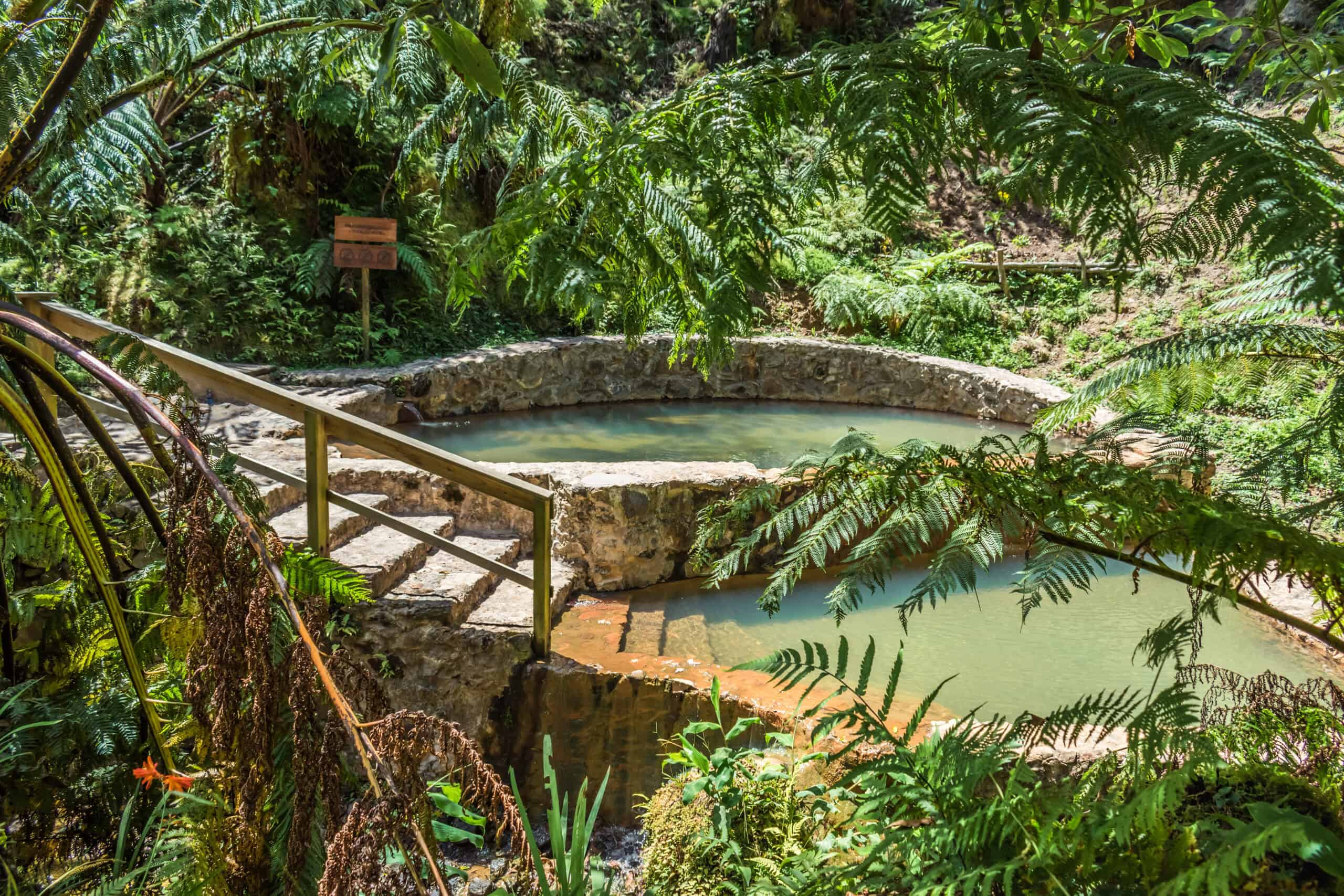 Most of the Azores’ hot springs are located on the main island of Sao Miguel. Caldera Velha is on the northern side of the mountain pass which runs from Agua de Pau on the south coast, over Pico da Barrosa to Ribeira Grande on the north coast. Like its more famous sister pools in Furnas, Caldeira Velha’s waters are coloured deep orange from the high iron-oxide content; it’s drawn into the water as it rises from a deep thermal aquifer. What’s unique about Caldeira Velha is the 30˚C waterfall which falls out of the forest into the bathing pools below.
Most of the Azores’ hot springs are located on the main island of Sao Miguel. Caldera Velha is on the northern side of the mountain pass which runs from Agua de Pau on the south coast, over Pico da Barrosa to Ribeira Grande on the north coast. Like its more famous sister pools in Furnas, Caldeira Velha’s waters are coloured deep orange from the high iron-oxide content; it’s drawn into the water as it rises from a deep thermal aquifer. What’s unique about Caldeira Velha is the 30˚C waterfall which falls out of the forest into the bathing pools below.
Due to its popularity, we recommend booking in advance via: https://parquesnaturais.azores.gov.pt/bilheteira/caldeiravelha An important note regarding all the hot springs on Sao Miguel: the iron-oxide can stain, so be sure to take dark-coloured costumes and towels.
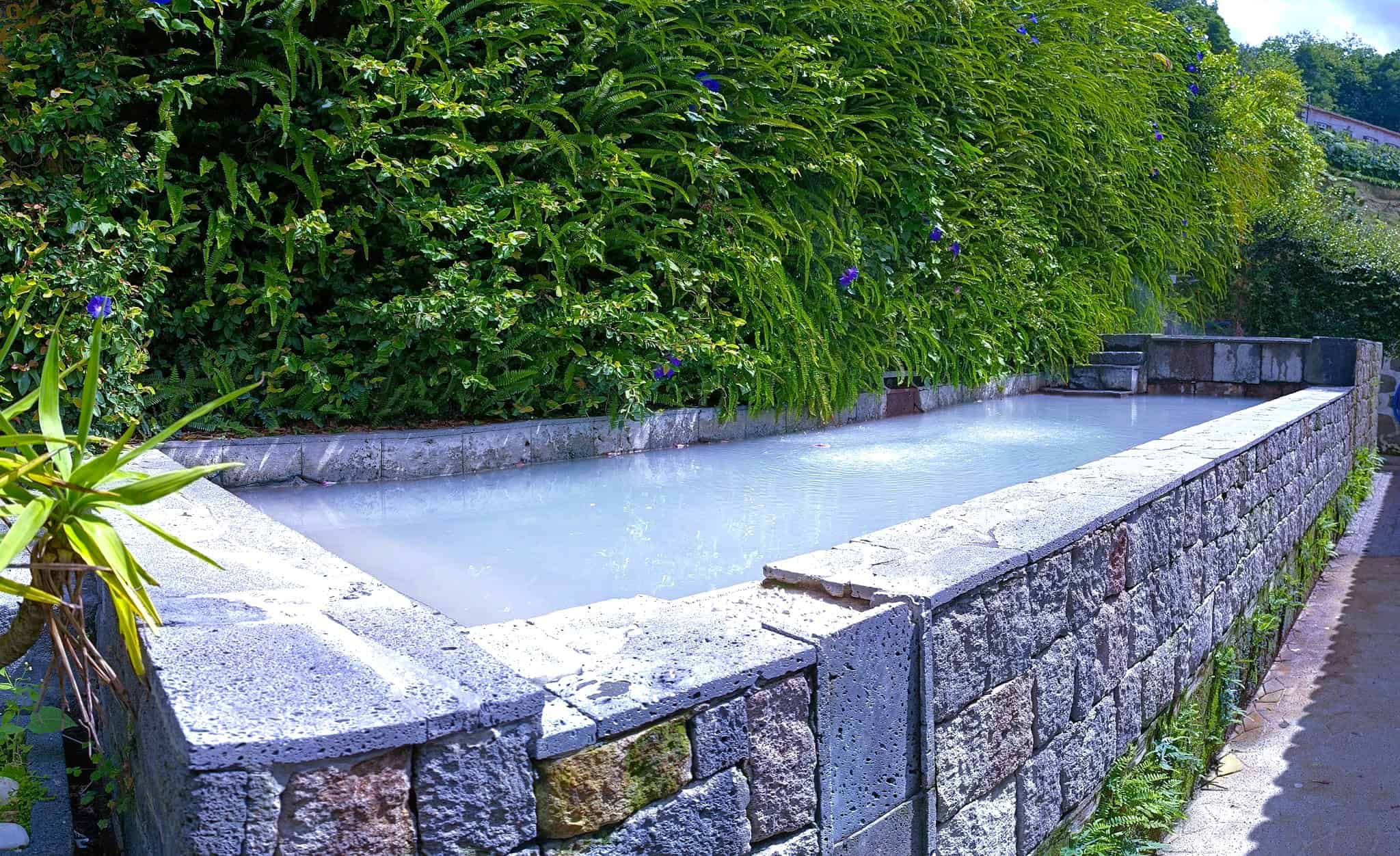 The Termas das Caldieras Ribeira Grande are to the east, on the narrow pass which heads up to Monte Escuro. Also known as the Banhos da Coroa (Crown Baths), this is the oldest spa on the island, built in the early 1800s. A number of new features were added in 2016 and the water temperatures range from 32⁰C to 40⁰C. There’s also an interpretation centre, Casa das Caldeiras, where you can learn more about the geological processes at work under your feet.
The Termas das Caldieras Ribeira Grande are to the east, on the narrow pass which heads up to Monte Escuro. Also known as the Banhos da Coroa (Crown Baths), this is the oldest spa on the island, built in the early 1800s. A number of new features were added in 2016 and the water temperatures range from 32⁰C to 40⁰C. There’s also an interpretation centre, Casa das Caldeiras, where you can learn more about the geological processes at work under your feet.
The pools are open from 10am to 10pm (sometimes 11pm on special occasions) – you can’t prebook at the moment, but you can usually request a list of their treatments and prices by messaging via their Facebook page.
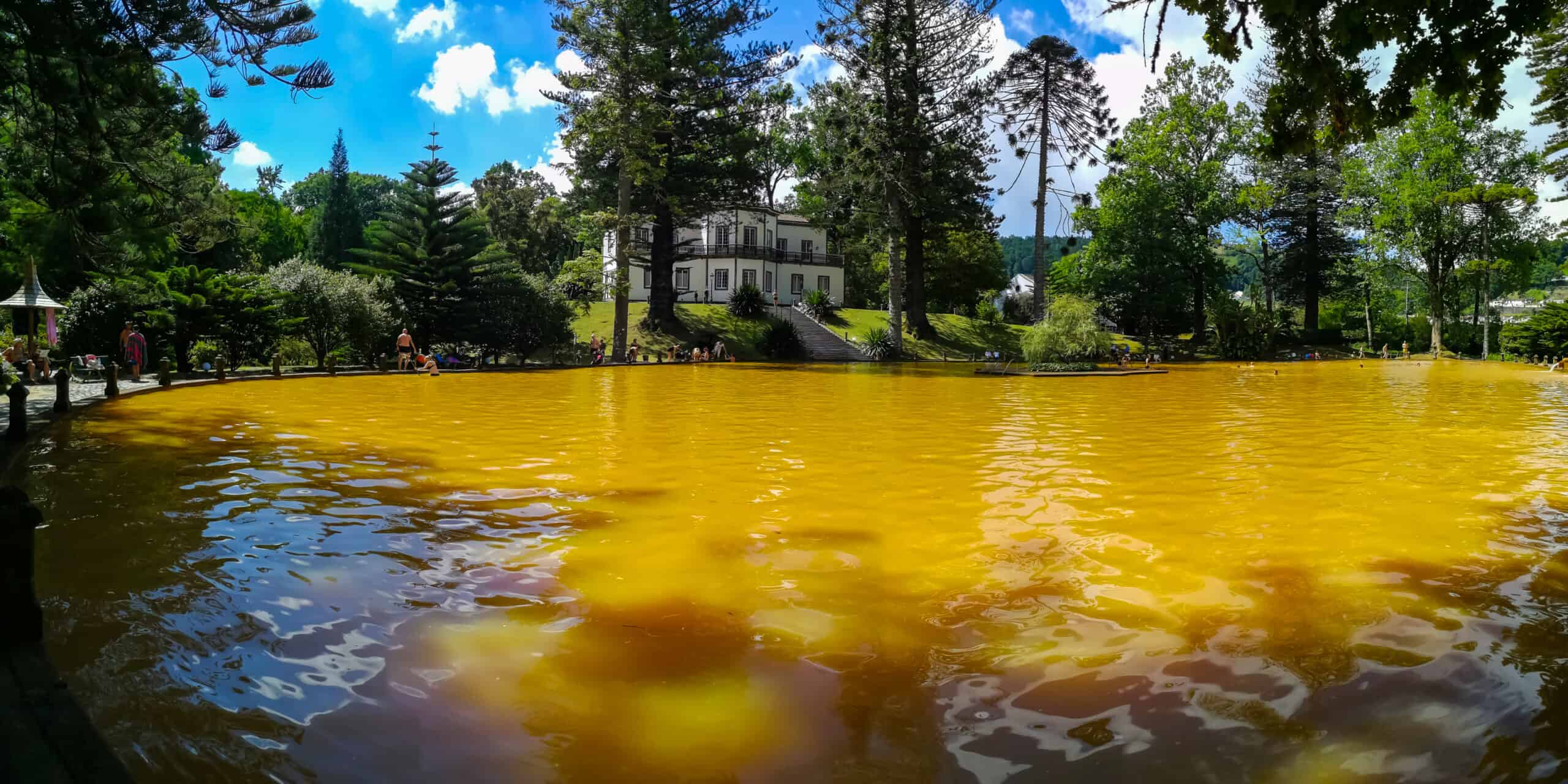 The Azores’ most famous geothermal pools are at the 200-year-old Terra Nostra Botanical Gardens in Furnas. A small pool was first constructed in 1780, before being expanded in 1935 into the large oval pool we see today. Two smaller pools were added a few years ago, which are geared more towards relaxation. If you’re staying at the Terra Nostra Hotel, the gardens are closed to the public between 16:30 and 10:30, and are floodlit at night for the exclusive use of guests. The hotel also provides dark-coloured towels and robes specifically for the pools. If you’re a day visitor, we can prebook tickets for you. Unfortunately, towel rental ended with COVID – it’s quite easy to purchase suitable towels in Ponta Delgada prior to your visit.
The Azores’ most famous geothermal pools are at the 200-year-old Terra Nostra Botanical Gardens in Furnas. A small pool was first constructed in 1780, before being expanded in 1935 into the large oval pool we see today. Two smaller pools were added a few years ago, which are geared more towards relaxation. If you’re staying at the Terra Nostra Hotel, the gardens are closed to the public between 16:30 and 10:30, and are floodlit at night for the exclusive use of guests. The hotel also provides dark-coloured towels and robes specifically for the pools. If you’re a day visitor, we can prebook tickets for you. Unfortunately, towel rental ended with COVID – it’s quite easy to purchase suitable towels in Ponta Delgada prior to your visit.
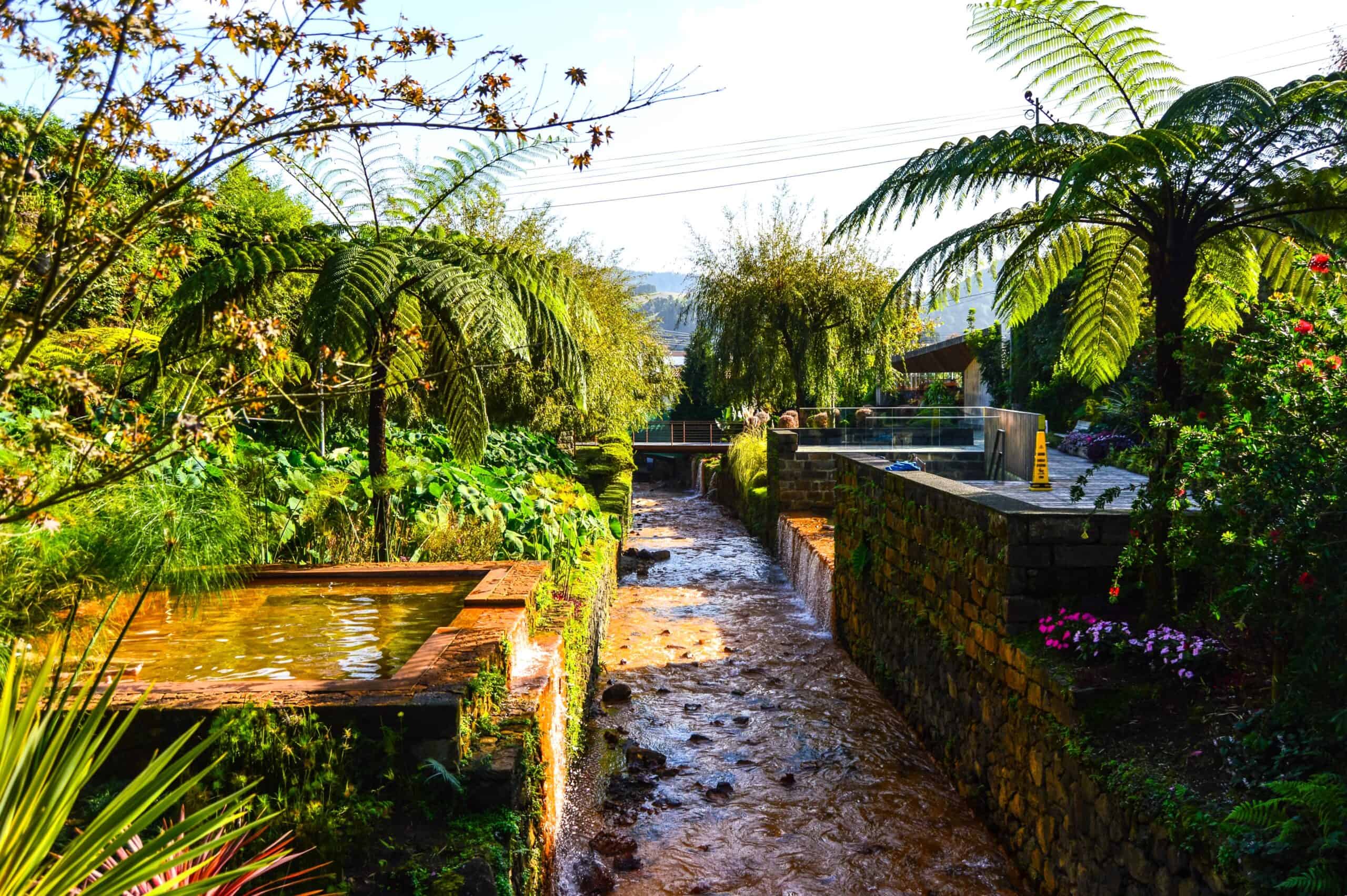 Also in Furnas, the naturally heated Ribeira dos Lameiros has been channelled into a series of infinity-style pools known as Poca Dona Beija. Constructed from local basalt, each of the five pool has its own unique design – there are also changing facilities and showers, and at time of writing Poca Dona Beija is the only hot spring which offers towels to rent. Tickets must be prebooked online at: https://pocadadonabeija.com/en/ Tickets are 8€ per person and the maximum stay is 90 minutes – towel rental (4€ + a deposit) and locker rental (2€ + a deposit) are paid for direct on the day, and we recommend taking along a supply of 1€ coins for the coin-operated showers.
Also in Furnas, the naturally heated Ribeira dos Lameiros has been channelled into a series of infinity-style pools known as Poca Dona Beija. Constructed from local basalt, each of the five pool has its own unique design – there are also changing facilities and showers, and at time of writing Poca Dona Beija is the only hot spring which offers towels to rent. Tickets must be prebooked online at: https://pocadadonabeija.com/en/ Tickets are 8€ per person and the maximum stay is 90 minutes – towel rental (4€ + a deposit) and locker rental (2€ + a deposit) are paid for direct on the day, and we recommend taking along a supply of 1€ coins for the coin-operated showers.
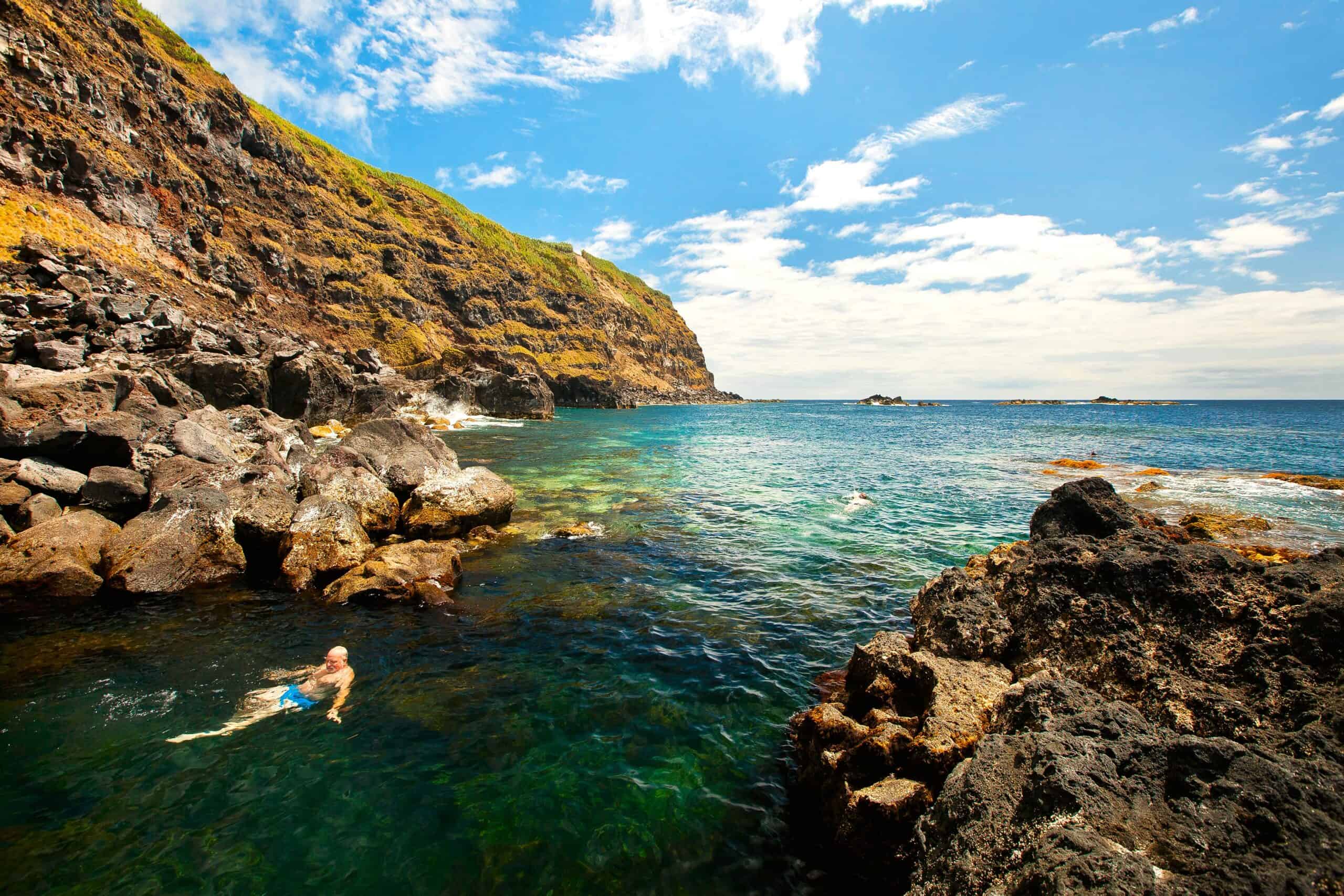 Unlike the other inland pools, Ferraria is located down on the southeast coast of Sao Miguel, in the shadow of the Sete Cidades caldera. The main crater doesn’t have any active fumaroles or hot springs – instead, a hydrothermal fissure vents into the sea at Ferraria and naturally heats the water just offshore. Most visitors come to swim in the sea, which is free – the Piscina Natural da Sofia is usually the most-accessible point, but we do recommend caution: the area doesn’t have lifeguards, the rocky volcanic coastline can be sharp, and you should avoid getting in the sea if it’s at all rough.
Unlike the other inland pools, Ferraria is located down on the southeast coast of Sao Miguel, in the shadow of the Sete Cidades caldera. The main crater doesn’t have any active fumaroles or hot springs – instead, a hydrothermal fissure vents into the sea at Ferraria and naturally heats the water just offshore. Most visitors come to swim in the sea, which is free – the Piscina Natural da Sofia is usually the most-accessible point, but we do recommend caution: the area doesn’t have lifeguards, the rocky volcanic coastline can be sharp, and you should avoid getting in the sea if it’s at all rough.
You might prefer to visit the purpose-built spa, which has indoor and outdoor pools, a sauna and a Turkish bath – a list of spa treatments and prices is available by email: termasdaferraria@gmail.com. There’s also a large, free car park but the narrow, zig-zagging road down to the coast can be tricky – it’s often easier to park at the miradouro da Ilha Sabrina and walk down instead.
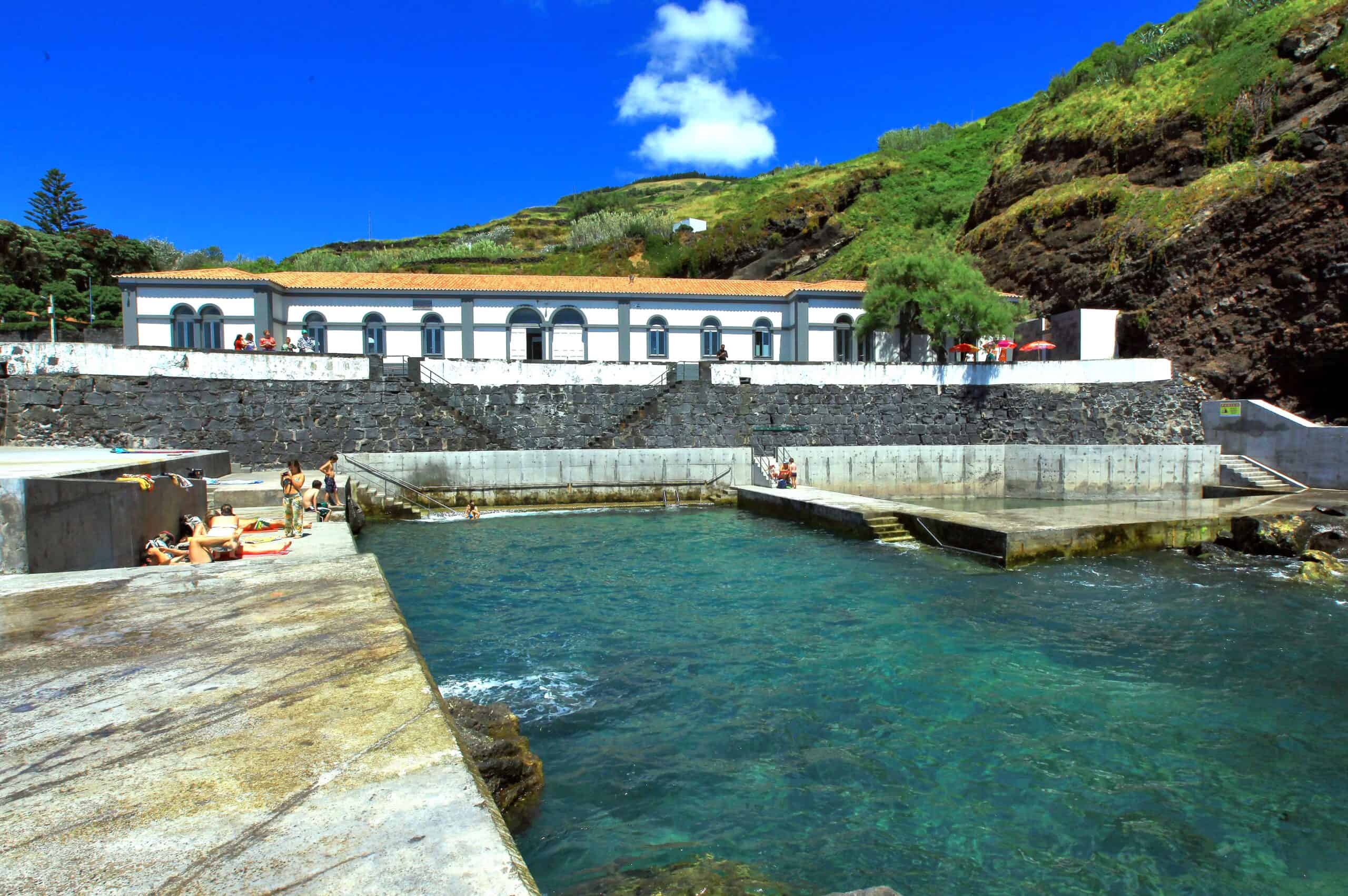 The small island of Graciosa also has its own coastal spa: the Termas do Carapacho. It’s located at the southern tip of the island, and like Ferraria, the hot water originates from the large Furna do Enxofre caldera next door. There’s been spa here in one form or another since 1750, and the water temperature is usually between 35⁰C and 40⁰C. Unlike the springs on Sao Miguel, Carapacho’s water tends to be clearer as the iron content is much lower. There’s also a popular sea-water pool outside, with a view of the impressive 191m high Ponta do Carapacho cliffs and the Ilheu de Baixo – an island which was once attached to Graciosa. It’s now a protected maritime conservation area, home to a number of species of terns and shearwaters.
The small island of Graciosa also has its own coastal spa: the Termas do Carapacho. It’s located at the southern tip of the island, and like Ferraria, the hot water originates from the large Furna do Enxofre caldera next door. There’s been spa here in one form or another since 1750, and the water temperature is usually between 35⁰C and 40⁰C. Unlike the springs on Sao Miguel, Carapacho’s water tends to be clearer as the iron content is much lower. There’s also a popular sea-water pool outside, with a view of the impressive 191m high Ponta do Carapacho cliffs and the Ilheu de Baixo – an island which was once attached to Graciosa. It’s now a protected maritime conservation area, home to a number of species of terns and shearwaters.
Volcanoes, Caves and Lava Tunnels…
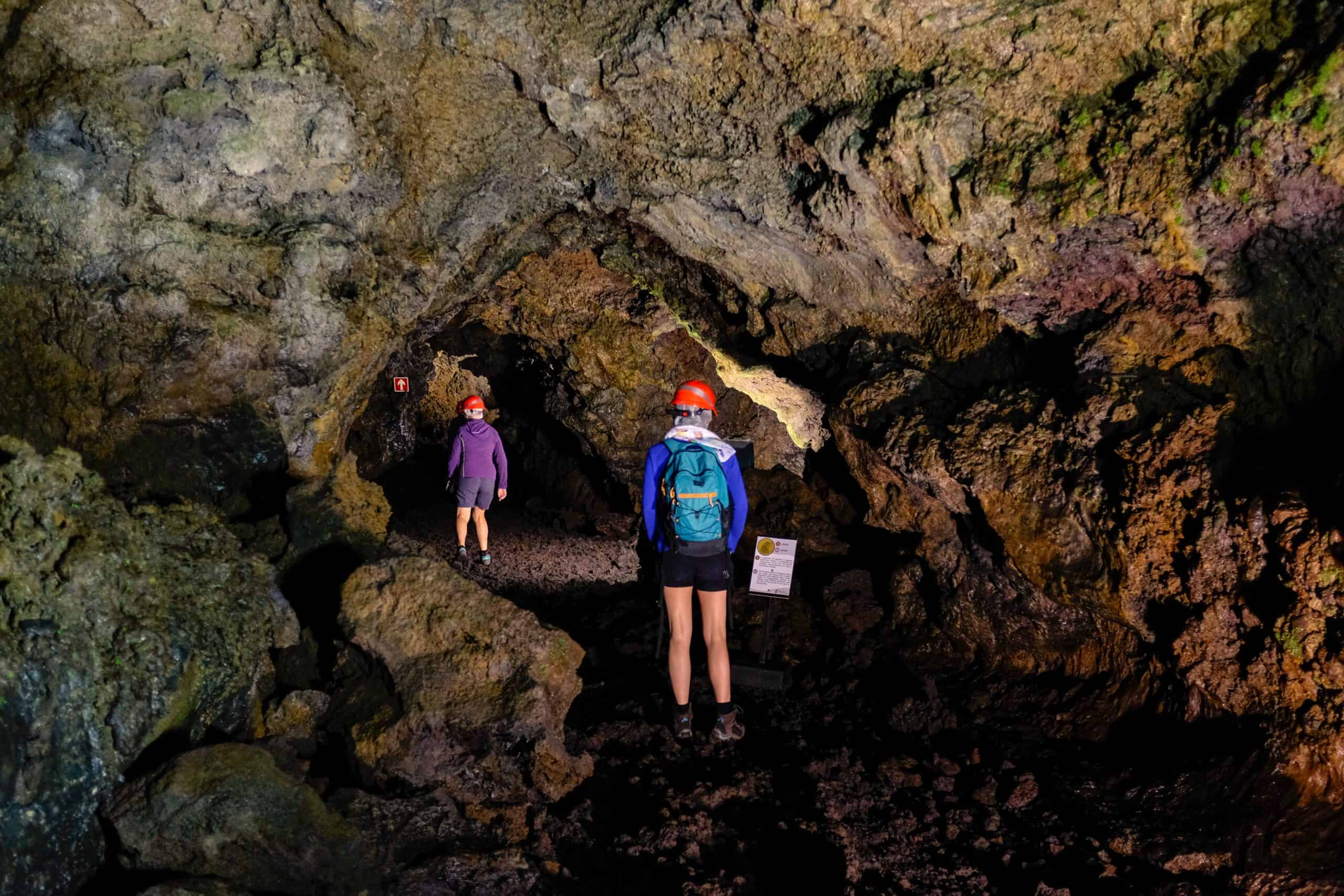 The Gruta do Carvao lava tunnel is underneath the capital Ponta Delgada, with a visitors’ centre located on the northwestern edge of the city. At 1.6km in length, Carvao is the largest volcanic, subterranean structure accessible on the island, although studies suggest the full length of the tunnel could be as much as 5km. Its origin isn’t certain, but it’s believed to have formed during a major eruption of the Sete Cidades caldera around 12,000 years ago. Visits to the tunnel cost 9€ per person must be booked in advance via http://grutadocarvao.amigosdosacores.pt – payment is direct on the day of your visit.
The Gruta do Carvao lava tunnel is underneath the capital Ponta Delgada, with a visitors’ centre located on the northwestern edge of the city. At 1.6km in length, Carvao is the largest volcanic, subterranean structure accessible on the island, although studies suggest the full length of the tunnel could be as much as 5km. Its origin isn’t certain, but it’s believed to have formed during a major eruption of the Sete Cidades caldera around 12,000 years ago. Visits to the tunnel cost 9€ per person must be booked in advance via http://grutadocarvao.amigosdosacores.pt – payment is direct on the day of your visit.
An important note regarding visits to lava caves and tunnels: you need to be sure-footed and relatively sprightly in order to visit many of these sites. They’re often accessed via steep steps, the floors can be slippery and uneven, and ducking is often required – if you suffer with vertigo, some of these sites might not be for you. That aside, they’re fascinating places – do feel free to call for a chat and we can explain the sites in better detail.
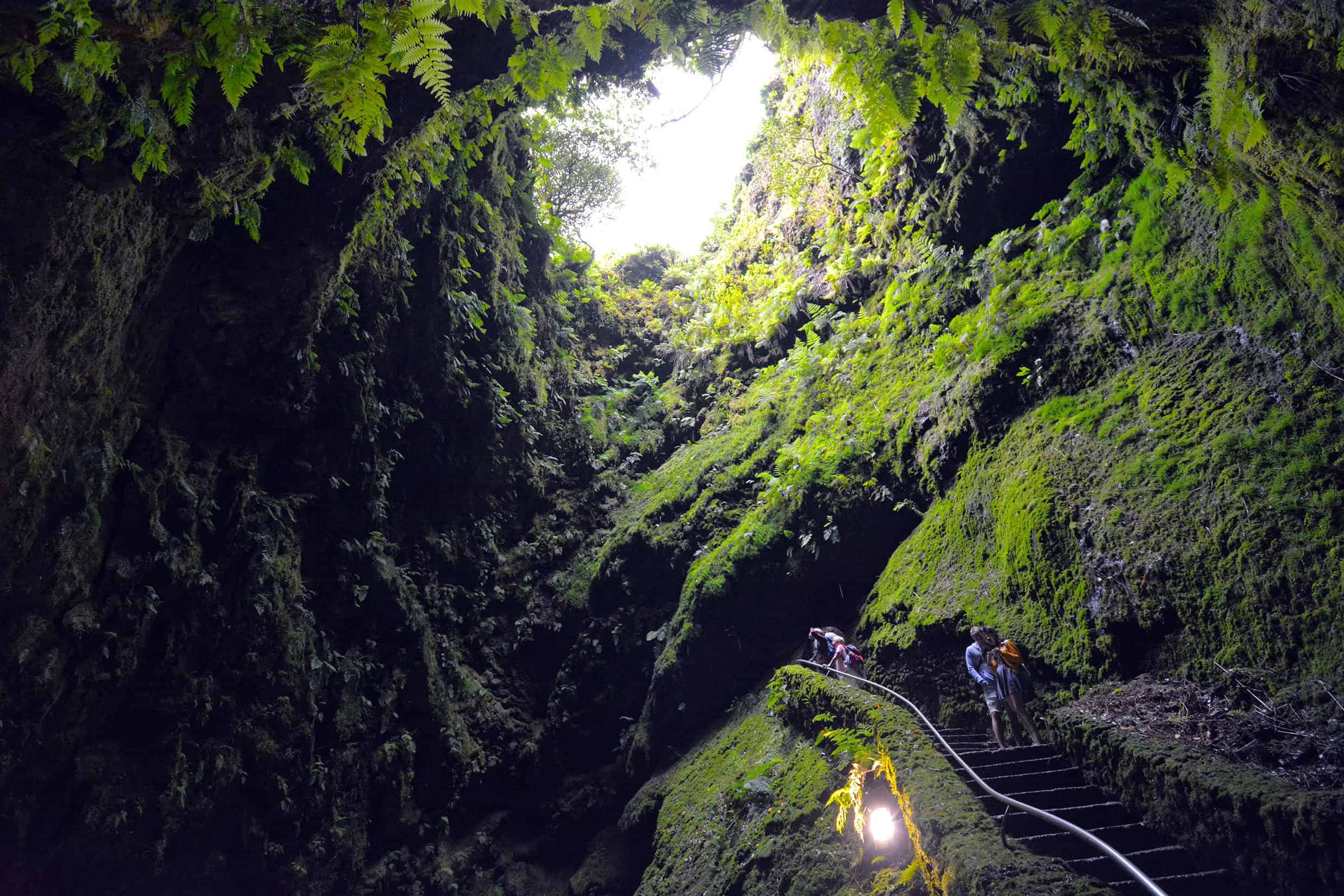 One of the Azores’ most-famous volcano caves is Algar do Carvao on the island of Terceira. The story goes: in the late 1800s, local farmers began reporting the theft of their livestock, which would have proved nigh on impossible on such a small island. The collapsed roof of the cave was discovered, and a farmer made a first descent (with extremely basic equipment) on 26th January 1893, where he found the remains of the many missing cows.
One of the Azores’ most-famous volcano caves is Algar do Carvao on the island of Terceira. The story goes: in the late 1800s, local farmers began reporting the theft of their livestock, which would have proved nigh on impossible on such a small island. The collapsed roof of the cave was discovered, and a farmer made a first descent (with extremely basic equipment) on 26th January 1893, where he found the remains of the many missing cows.
It wasn’t until 1963 that organised descents by qualified climbers allowed the cave to be explored more extensively. They discovered a conical shaped chimney dropping down from the surface to a low point of around 80m. Part way down, a second chamber was discovered heading away horizontally, giving the whole cave system a kind of wonky Y-shape. The local Os Montanheiros mountaineering association spent eighteen months digging the entrance tunnel, and Algar do Carvao was opened to the public in December 1968.
The cave is still manned by volunteers and usually only opens in the afternoons – daily from April to September, and on Tuesdays, Wednesdays, Fridays and Saturdays from October to March. You don’t need to prebook, tickets cost 10€ per person and you can pay on entry.
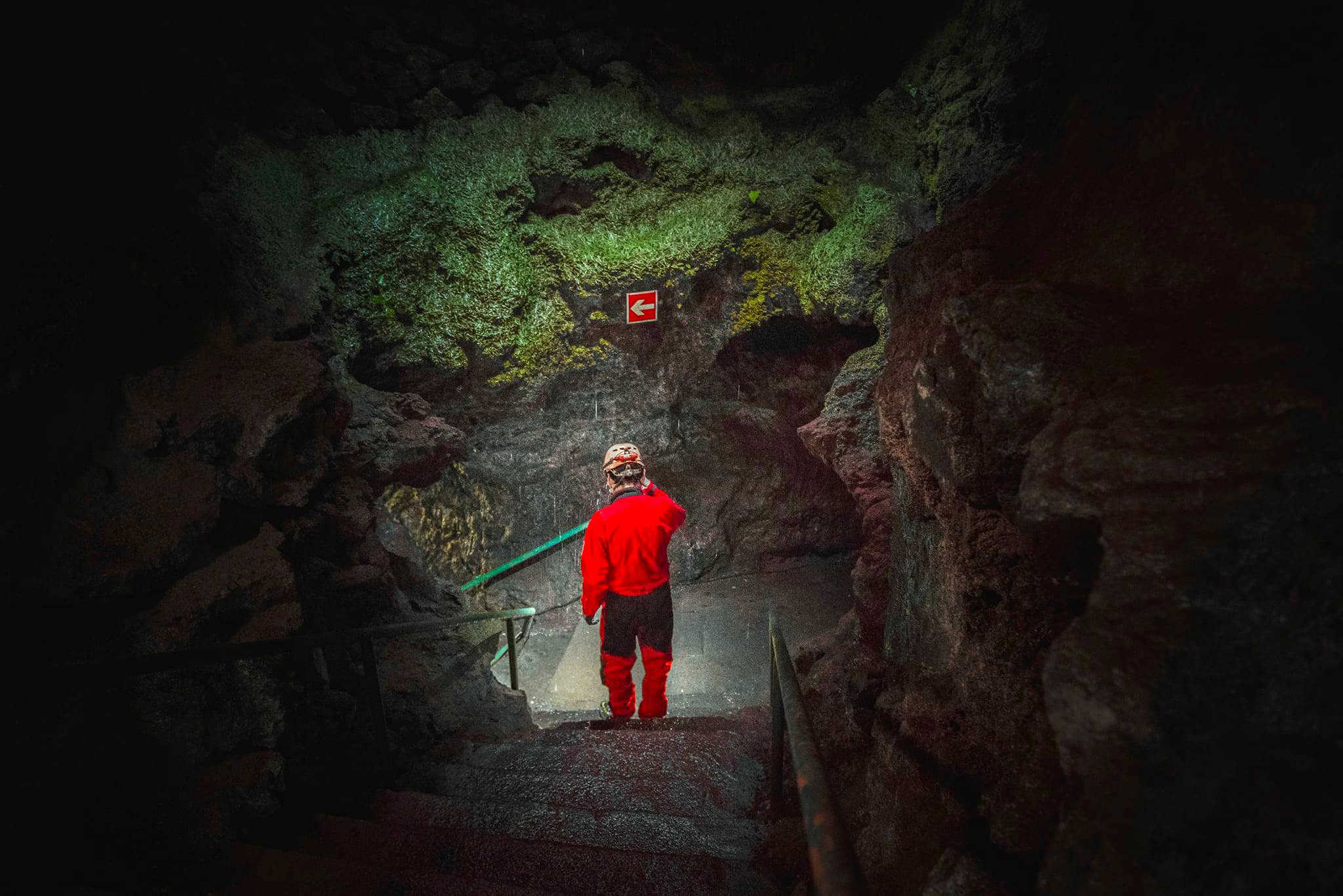 A ten-minute drive west will bring you to the Gruta do Natal (and you can buy a joint ticket at Algar do Carvao if you’d like to visit both). The cave was originally named Gruta do Cavalo – the cave of the horse – and yes, that’s because the remains of a missing horse were found there. It was renamed Gruta do Natal on its opening to public on Christmas Day 1969 (by the Os Montanheiros once again).
A ten-minute drive west will bring you to the Gruta do Natal (and you can buy a joint ticket at Algar do Carvao if you’d like to visit both). The cave was originally named Gruta do Cavalo – the cave of the horse – and yes, that’s because the remains of a missing horse were found there. It was renamed Gruta do Natal on its opening to public on Christmas Day 1969 (by the Os Montanheiros once again).
Natal is close to the site of the last major land eruption in the Azores in 1761. It began with a period of seismic activity centred around the Pico Alto fumarole field, followed by a second, more explosive phase on the eastern flanks of the Santa Barbara volcano. One of the island’s most famous natural landmarks was also created in this second phase: the Misterios Negros trachyte domes, which are just to the west of Gruta do Natal.
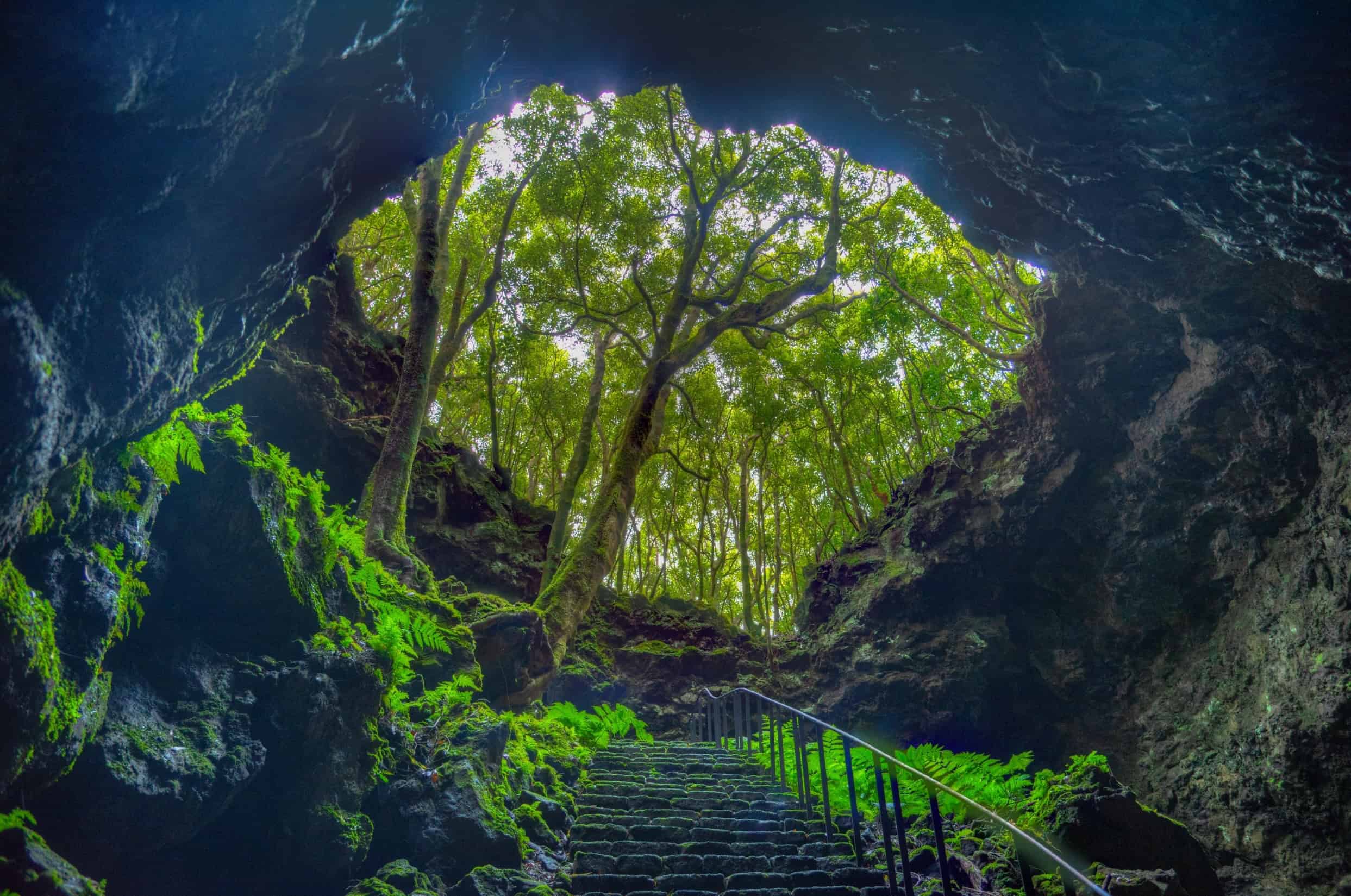 Gruta das Torres is the most popular cave system on the island of Pico – located in the hills above Criacao Velha. The caves were formed around 1500 years ago by a pahoehoe lava flow, where the outside of the flow cools and forms a solid crust, whilst liquid lava continues to flow underneath – eventually resulting a hollow tube. You’ll also see stalactites and stalagmites which formed as the liquid lava dripped from the roof of the tunnel. The total length of the cave system is still not 100% confirmed but it’s thought to be in the region of 5km – only the first 450 metres are currently accessible but they’re still impressive.
Gruta das Torres is the most popular cave system on the island of Pico – located in the hills above Criacao Velha. The caves were formed around 1500 years ago by a pahoehoe lava flow, where the outside of the flow cools and forms a solid crust, whilst liquid lava continues to flow underneath – eventually resulting a hollow tube. You’ll also see stalactites and stalagmites which formed as the liquid lava dripped from the roof of the tunnel. The total length of the cave system is still not 100% confirmed but it’s thought to be in the region of 5km – only the first 450 metres are currently accessible but they’re still impressive.
Guided tours run throughout the day, and visits must be booked in advance via https://parquesnaturais.azores.gov.pt/bilheteira/grutadastorres/
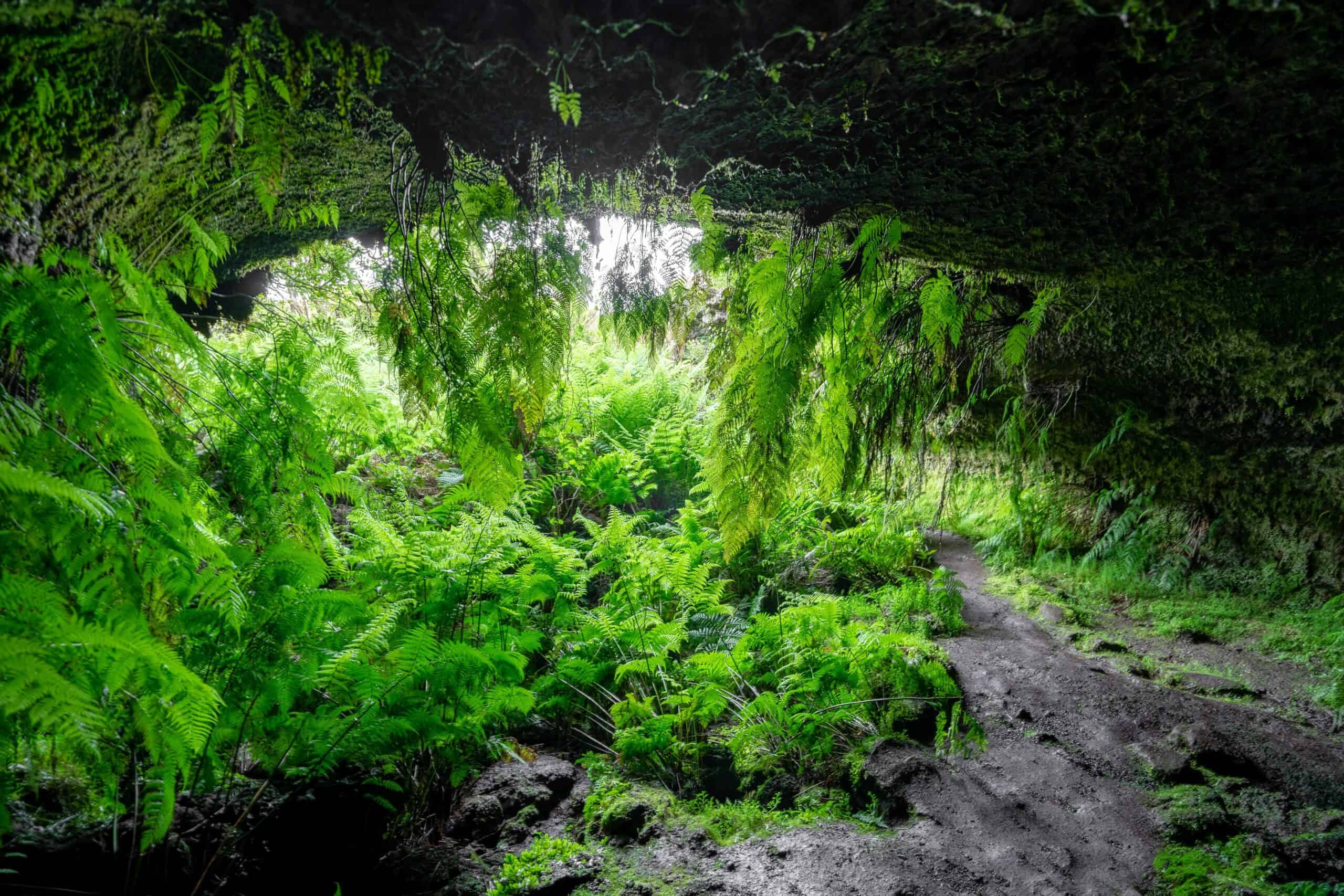 Students of geology might like to visit the cave at Furna do Frei Matias; a fifteen-minute drive away from Gruta das Torres. Unlike the other caves we’ve mentioned so far, Frei Matias is totally wild so do take great care – and take along a torch. The Frei Matias name is in reference to the local legend of ‘Brother Matias’ – a Terceiran friar who went to sea in pursuit of a vision of the Virgin Mary. A storm rose up and threatened to sink his small, improvised boat – Mary saved Matias from drowning, and deposited him safe and sound on Pico. His boat wasn’t so lucky, and as the island was yet to be settled by the Portuguese, Matias lived out his days in solitude in the Frei Matias caves.
Students of geology might like to visit the cave at Furna do Frei Matias; a fifteen-minute drive away from Gruta das Torres. Unlike the other caves we’ve mentioned so far, Frei Matias is totally wild so do take great care – and take along a torch. The Frei Matias name is in reference to the local legend of ‘Brother Matias’ – a Terceiran friar who went to sea in pursuit of a vision of the Virgin Mary. A storm rose up and threatened to sink his small, improvised boat – Mary saved Matias from drowning, and deposited him safe and sound on Pico. His boat wasn’t so lucky, and as the island was yet to be settled by the Portuguese, Matias lived out his days in solitude in the Frei Matias caves.
To locate the caves when driving from Madalena: arriving at the above map location, look for a small road junction on your right which quickly turns into a gravel track. Leaving your car parked on the tarmac, head up the track, through the metal gate and the cave is directly ahead. It can be quite muddy.
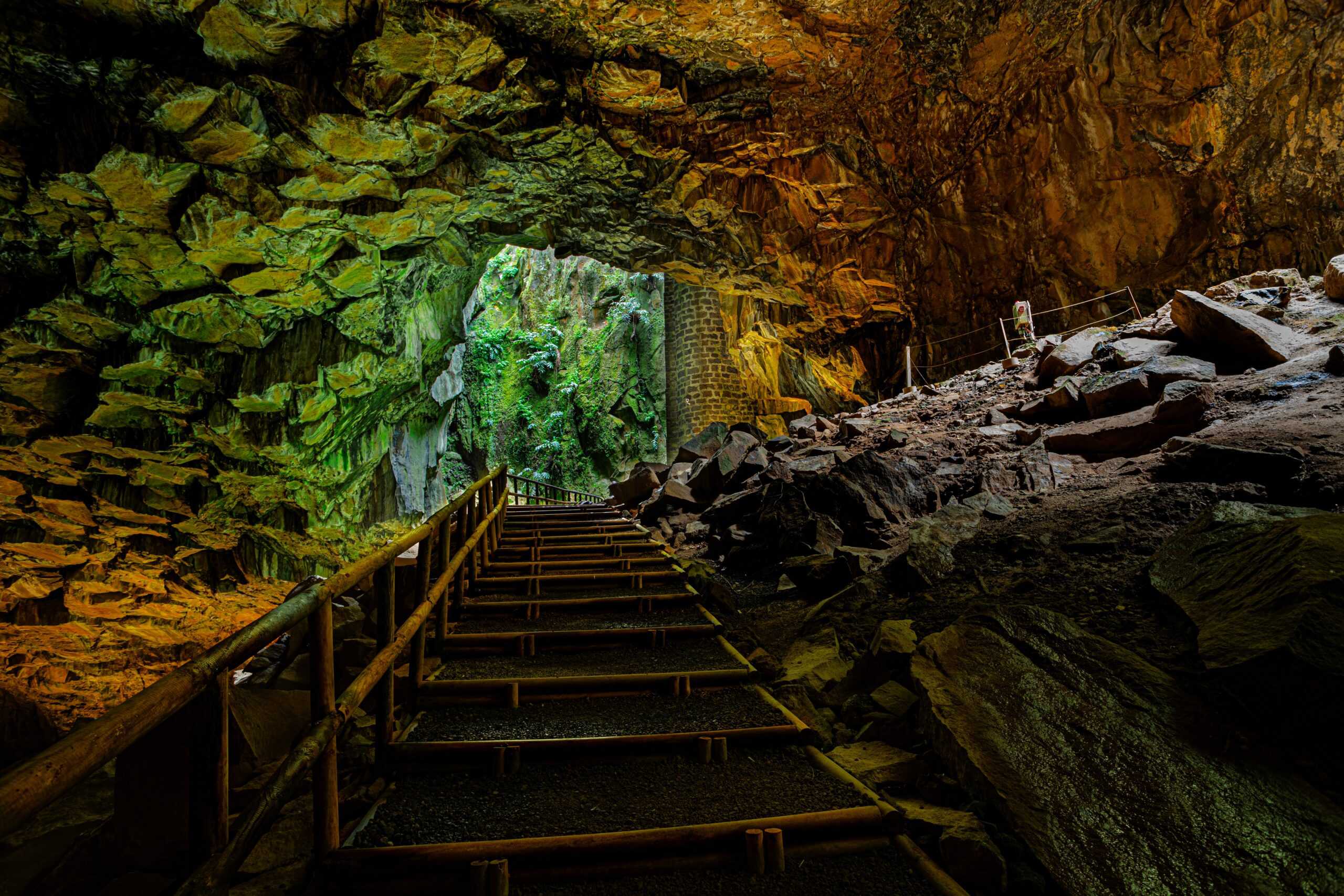
Arguably the most impressive volcanic cave in the Azores is Furna do Enxofre on Graciosa. The visitors’ centre is excellent and has displays which guide you through the geological history of the island, from its formation around 600,000 years ago to the present day.
The more interesting eruptions (in terms of what we can see today) occurred 50,000 years ago and created the large caldera above you. It’s an oval, 2km across and 1km wide, and at the height of its volcanic activity (around12,000 years ago), it contained a permanent 240m deep lake of lava, fed from the Furna do Enxofre cave below. Up until the mid-1960s, the caldera was a barren volcanic landscape more akin to Capelinhos on Faial, before an intense period of arborization created today’s green landscape.
It’s said that Prince Albert of Monico was one of the first people to visit the interior of the cave, descending via a rope ladder during a visit to the island in 1879. Thankfully, a man-made, spiral staircase takes you down 183 steps, through a volcanic vent into the cave proper. You’ll see it’s a vast cavern, almost 200m long and 50m high – it has its own permanent underground lake, which in turn has its own permanent rowing boat: for monitoring the sulphur content of the lower reaches of the cave. You’ll also see fumaroles which are still actively venting – it’s occasionally necessary to close the caves if the sulphur contact gets too high – you can check they’re open via https://parquesnaturais.azores.gov.pt/en/parques/7/centro/18/horarios Entry to the cave costs 5€ per person and you don’t need to prebook.
Museums and Interpretation Centres…
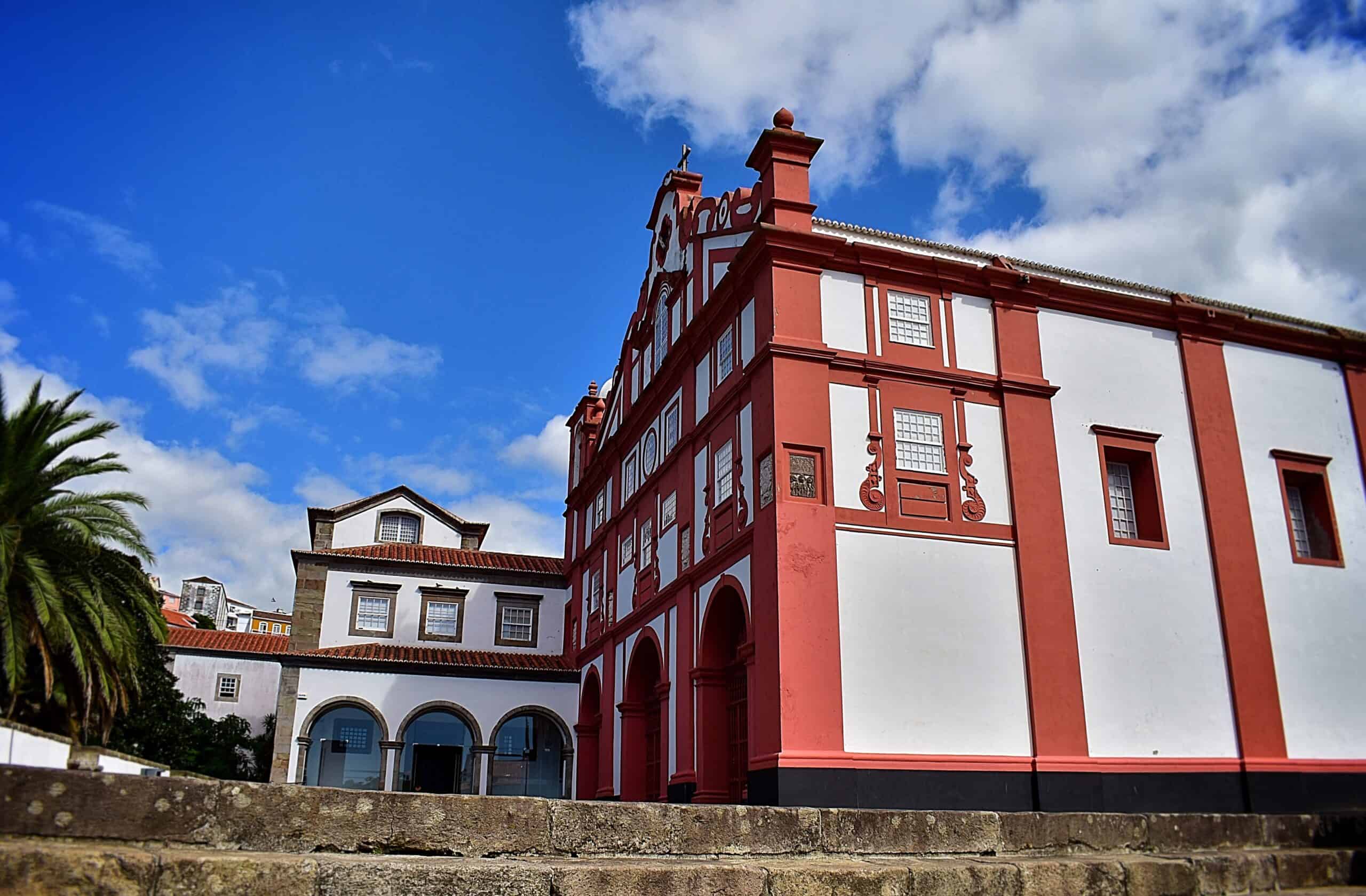 Located in Terceira’s island capital, the Museu de Angra do Heroismo, or MAH for short, houses the Azores’ most extensive collection of 18th and 19th century art, religious artefacts, locally-made ceramics, period clothing and traditional musical instruments. Its ‘Do Mar e da Terra – a history in the Atlantic’ exhibition charts the history of the Azores from their settlement in the 15th century up to the revolution in 1974. The building is also the last resting place of Paulo de Gama, brought here by his brother Vasco at the end of their Indian voyage in 1499. Entry is 2€ per person.
Located in Terceira’s island capital, the Museu de Angra do Heroismo, or MAH for short, houses the Azores’ most extensive collection of 18th and 19th century art, religious artefacts, locally-made ceramics, period clothing and traditional musical instruments. Its ‘Do Mar e da Terra – a history in the Atlantic’ exhibition charts the history of the Azores from their settlement in the 15th century up to the revolution in 1974. The building is also the last resting place of Paulo de Gama, brought here by his brother Vasco at the end of their Indian voyage in 1499. Entry is 2€ per person.
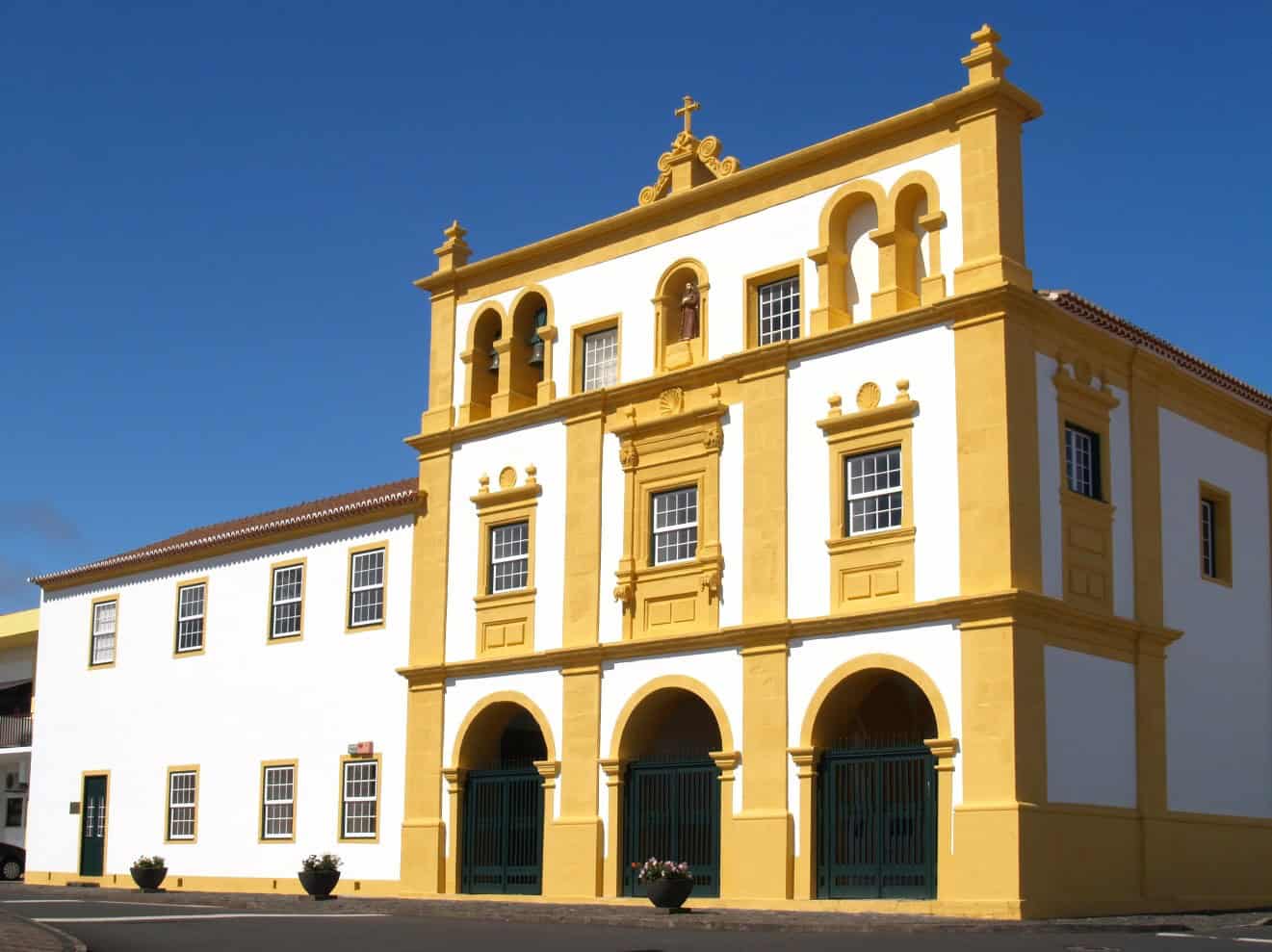
On a smaller scale but my no means less interesting, the Museu das Flores has a more local take on Azorean history, with an exhibition on Flores’ maritime history, its past shipbuilding industry, and the various shipwrecks which occurred across this far western region. Located in the town of Santa Cruz on the east coast of Flores, the building was originally the Convento de Sao Boaventura: a protected national monument thanks to its impressive frontage, its quadrangular cloister and its hand-painted cedar vaulted ceilings. Entry is 1€ per person.
The nearby Fabrica da Baleia do Boqueirao at the northern end of Santa Cruz is one of the islands’ best-preserved examples of a whaling factory. The end of hunting in the 1980s had huge social and economic impacts on the Azores, and the centre is a key educational tool in understanding this period in the islands’ history. Entry is 2€ per person and is cash only. You can also visit preserved whaling factories on Faial and on Pico.
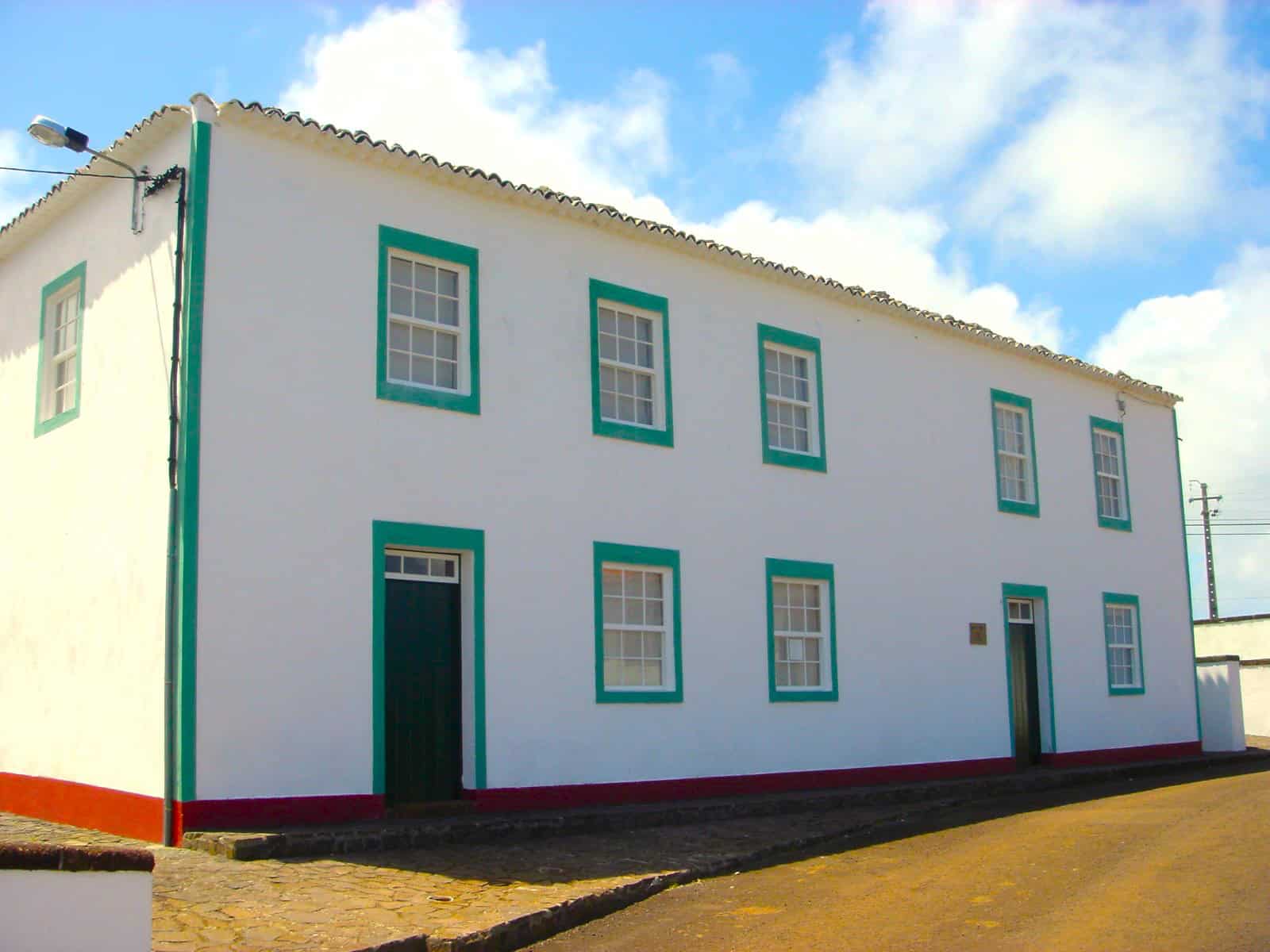 At the opposite end of the archipelago, Santa Maria also has a number of museums whose aims are to preserve the rapidly disappearing elements of rural Azorean island life. The Museu de Santa Maria is located in a fairly non-descript 20th century house in Santo Espirito, and was a labour of love for parish priest José Maria Amaral – preserving the cultural and agricultural history of the island for future generations. He officially opened his ‘Ethnographic and Parochial Museum ‘ in 1960 and the collection official became the Museum of the Island of Santa Maria in 1996. The recently inaugurated Pólo de Vila do Porto is an extension of the main museum, located in the former home of celebrated Azorean historian Manuel Monteiro Velho Arruda (1873-1950), and promotes more contemporary, local Azorean artists (and some international artists’ work).
At the opposite end of the archipelago, Santa Maria also has a number of museums whose aims are to preserve the rapidly disappearing elements of rural Azorean island life. The Museu de Santa Maria is located in a fairly non-descript 20th century house in Santo Espirito, and was a labour of love for parish priest José Maria Amaral – preserving the cultural and agricultural history of the island for future generations. He officially opened his ‘Ethnographic and Parochial Museum ‘ in 1960 and the collection official became the Museum of the Island of Santa Maria in 1996. The recently inaugurated Pólo de Vila do Porto is an extension of the main museum, located in the former home of celebrated Azorean historian Manuel Monteiro Velho Arruda (1873-1950), and promotes more contemporary, local Azorean artists (and some international artists’ work).
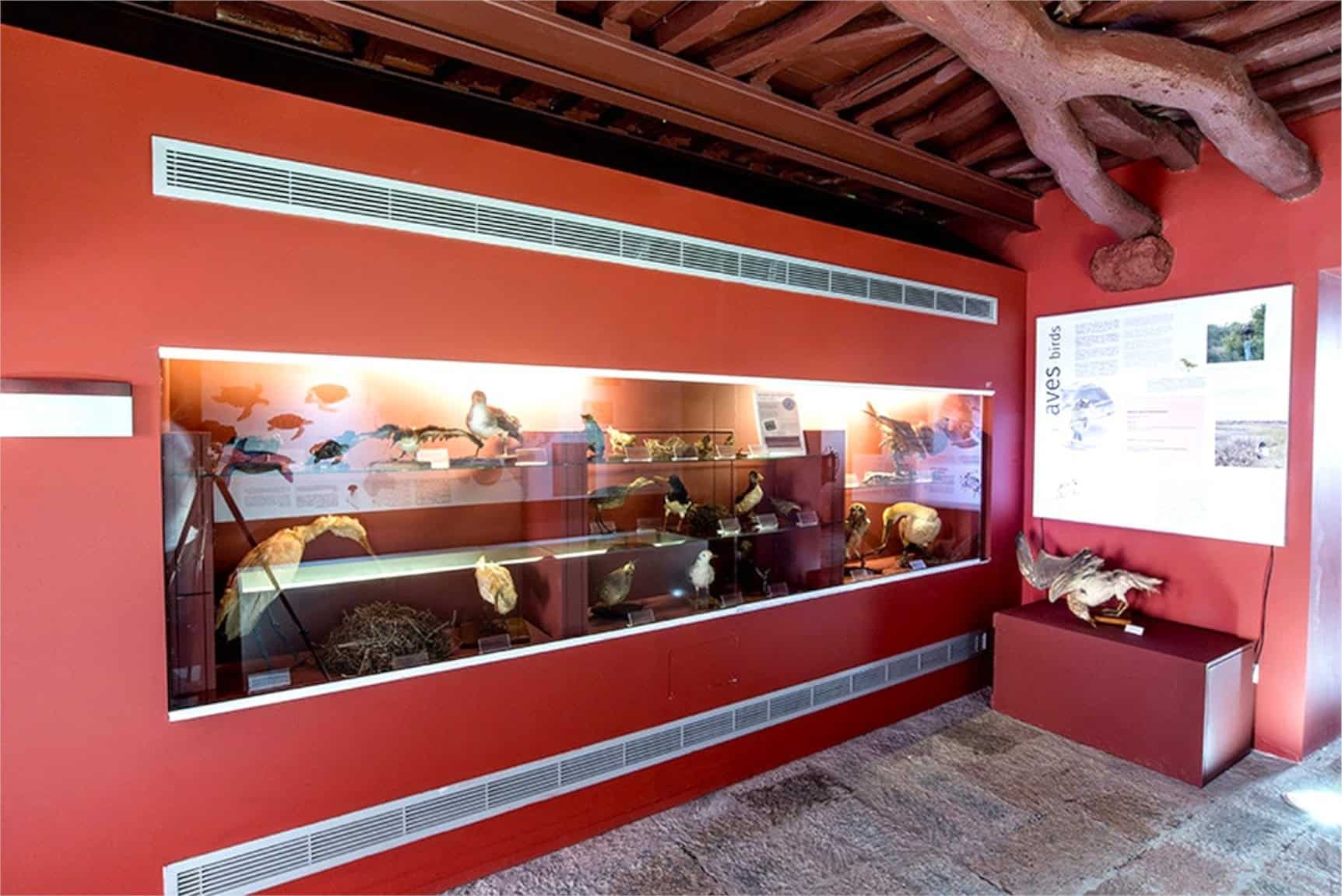 In Santa Maria’s main town Vila do Porto, you’ll find the Casa dos Fosseis. Also known as the Centro de Interpretacao Ambiental Dalberto Pombo, the casa is dedicated to the work of naturalist Dalberto Pomba who made extensive studies of the geology and wildlife of the island. Dalberto Pombo was a self-taught naturalist and pioneer in environmental education – his day job was as a clerk at Santa Maria’s airport, but his true passion was for the island’s botany, biology and geology.
In Santa Maria’s main town Vila do Porto, you’ll find the Casa dos Fosseis. Also known as the Centro de Interpretacao Ambiental Dalberto Pombo, the casa is dedicated to the work of naturalist Dalberto Pomba who made extensive studies of the geology and wildlife of the island. Dalberto Pombo was a self-taught naturalist and pioneer in environmental education – his day job was as a clerk at Santa Maria’s airport, but his true passion was for the island’s botany, biology and geology.
He discovered dozens of species during his lifetime and created the first Azores fossil record – geologically, Santa Maria is much older than the other islands of the Azores and is the only island where sea-fossil remains are found. Pomba did his best work at Grutas do Figueiral, a protected reserve where quarrying has revealed the Azores’ only fossil deposits. Geologically, Santa Maria is much older than the other islands of the Azores and is the only island where sea-fossil remains are found.
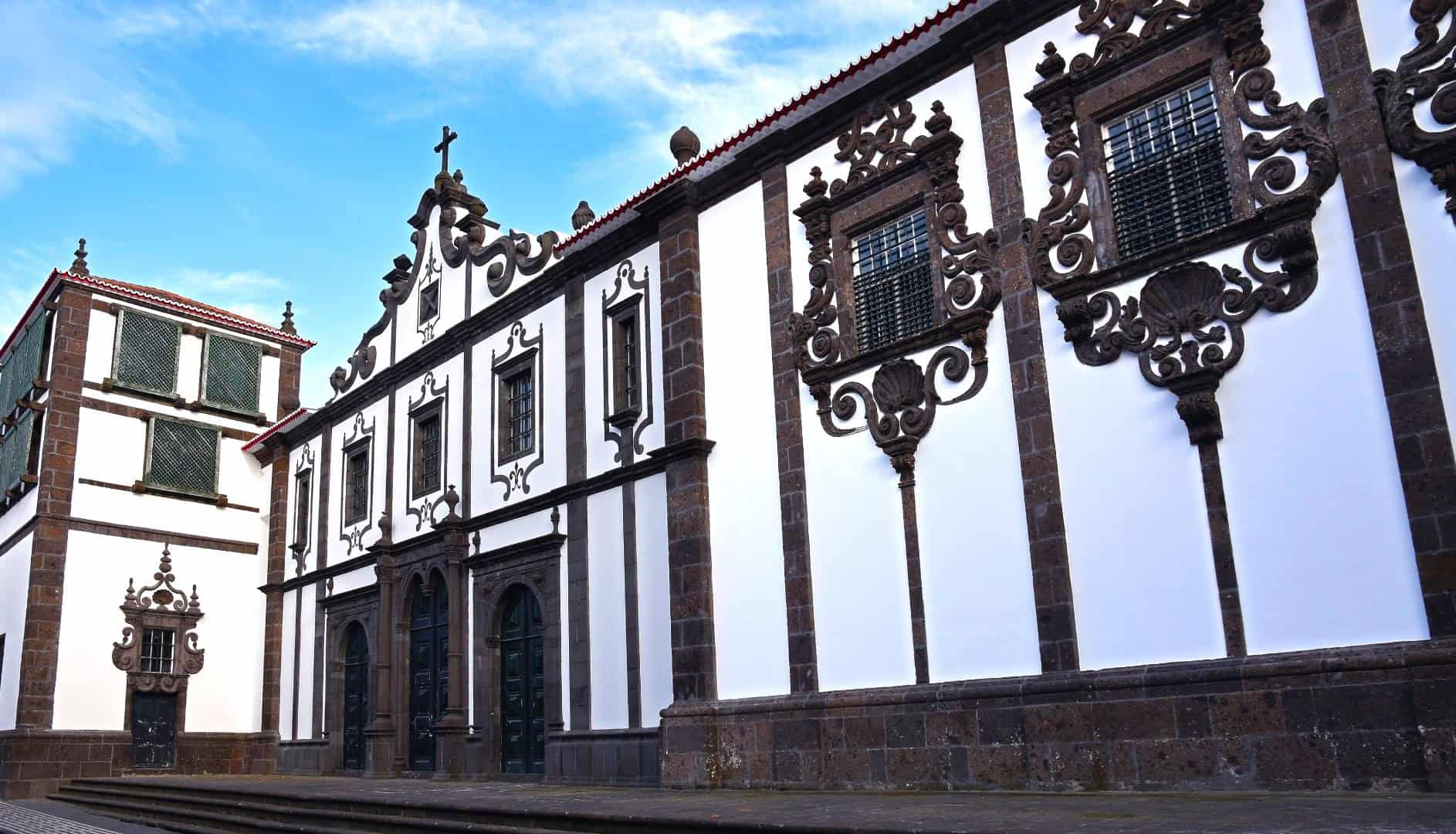 Hopping over to Sao Miguel, the Museu Carlos Machado in Ponta Delgada was the convent of Santa Andre before being transformed into an ethnographic museum by Carlos Machado in 1943. The ground floor is dedicated to 19th and 20th century every-day Azorean life, and the upper floors house displays of Azorean art, religious artifacts, coinage, textiles and interesting geological finds dating right back to the original settlement of the island in 15th century. Entry costs 2€ per person.
Hopping over to Sao Miguel, the Museu Carlos Machado in Ponta Delgada was the convent of Santa Andre before being transformed into an ethnographic museum by Carlos Machado in 1943. The ground floor is dedicated to 19th and 20th century every-day Azorean life, and the upper floors house displays of Azorean art, religious artifacts, coinage, textiles and interesting geological finds dating right back to the original settlement of the island in 15th century. Entry costs 2€ per person.
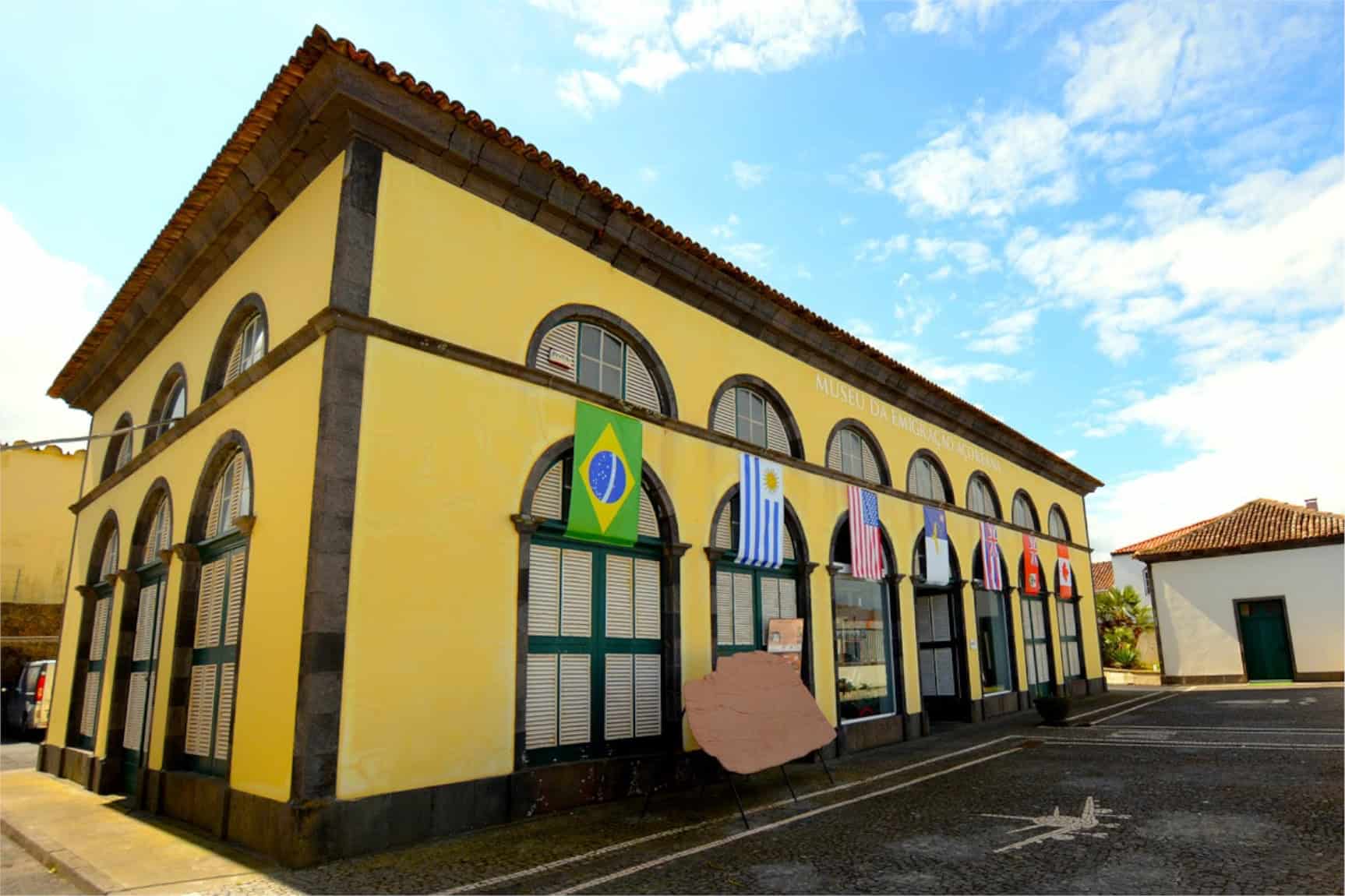 One of the most interesting museums in the Azores is the Museu da Emigracao Acoriana – the Museum of Azorean Emigration – on Sao Miguel’s north coast in the town of Ribeira Grande. Forced emigration has always been a feature of life in the Azores: families seeking safety in the wake of volcanic eruptions, the wholesale relocation of farming communities following the devastating wine blights of the 1800s, whale hunters drawn to the US and Canada for higher rates of pay, and the economic migrations which followed the hunting ban in the 1980s. There are many fascinating, sometimes arduous stories preserved at the museum – entry is 2€ per person.
One of the most interesting museums in the Azores is the Museu da Emigracao Acoriana – the Museum of Azorean Emigration – on Sao Miguel’s north coast in the town of Ribeira Grande. Forced emigration has always been a feature of life in the Azores: families seeking safety in the wake of volcanic eruptions, the wholesale relocation of farming communities following the devastating wine blights of the 1800s, whale hunters drawn to the US and Canada for higher rates of pay, and the economic migrations which followed the hunting ban in the 1980s. There are many fascinating, sometimes arduous stories preserved at the museum – entry is 2€ per person.
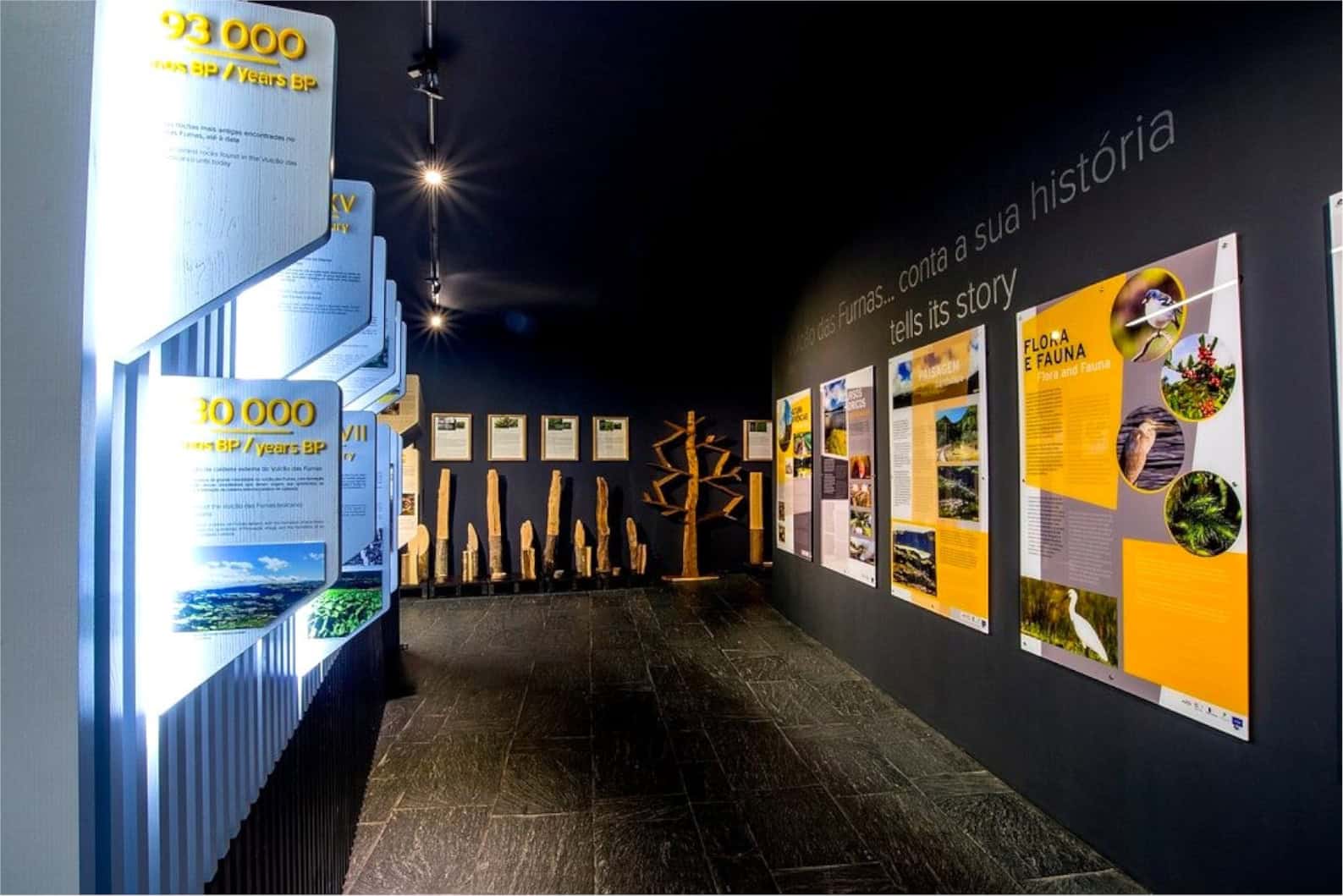 Also on Sao Miguel, the Centro de Interpretacao Ambiental das Furnas is on the southern shores of Lagoa das Furnas. Furnas is famous for its hot springs and geothermal pools, and the centre houses interesting displays on the geological history of region. The volcano is roughly 100,000 years and is actually made up of two calderas: the younger is the rim that’s most distinct today and measures around 6km in diameter, whilst the older caldera collapsed, creating the caldeiras geysers at the eastern end of the town.
Also on Sao Miguel, the Centro de Interpretacao Ambiental das Furnas is on the southern shores of Lagoa das Furnas. Furnas is famous for its hot springs and geothermal pools, and the centre houses interesting displays on the geological history of region. The volcano is roughly 100,000 years and is actually made up of two calderas: the younger is the rim that’s most distinct today and measures around 6km in diameter, whilst the older caldera collapsed, creating the caldeiras geysers at the eastern end of the town.
The last major eruption was in 1630, originating from a vent on the southern-side of the volcano. It was a particularly violent eruption which lasted three days – debris from the event has been discovered up to 550km away and it’s estimated that a column of ash rose 14km into the air. Almost all the buildings within a 10km radius were destroyed, and it’s believed a pyroclastic flow was responsible for the deaths of eighty islanders in the nearby harbour town of Ribeira Quente.
The entrance fee is 3€ – guided tours begin on the hour and last around thirty-minutes.
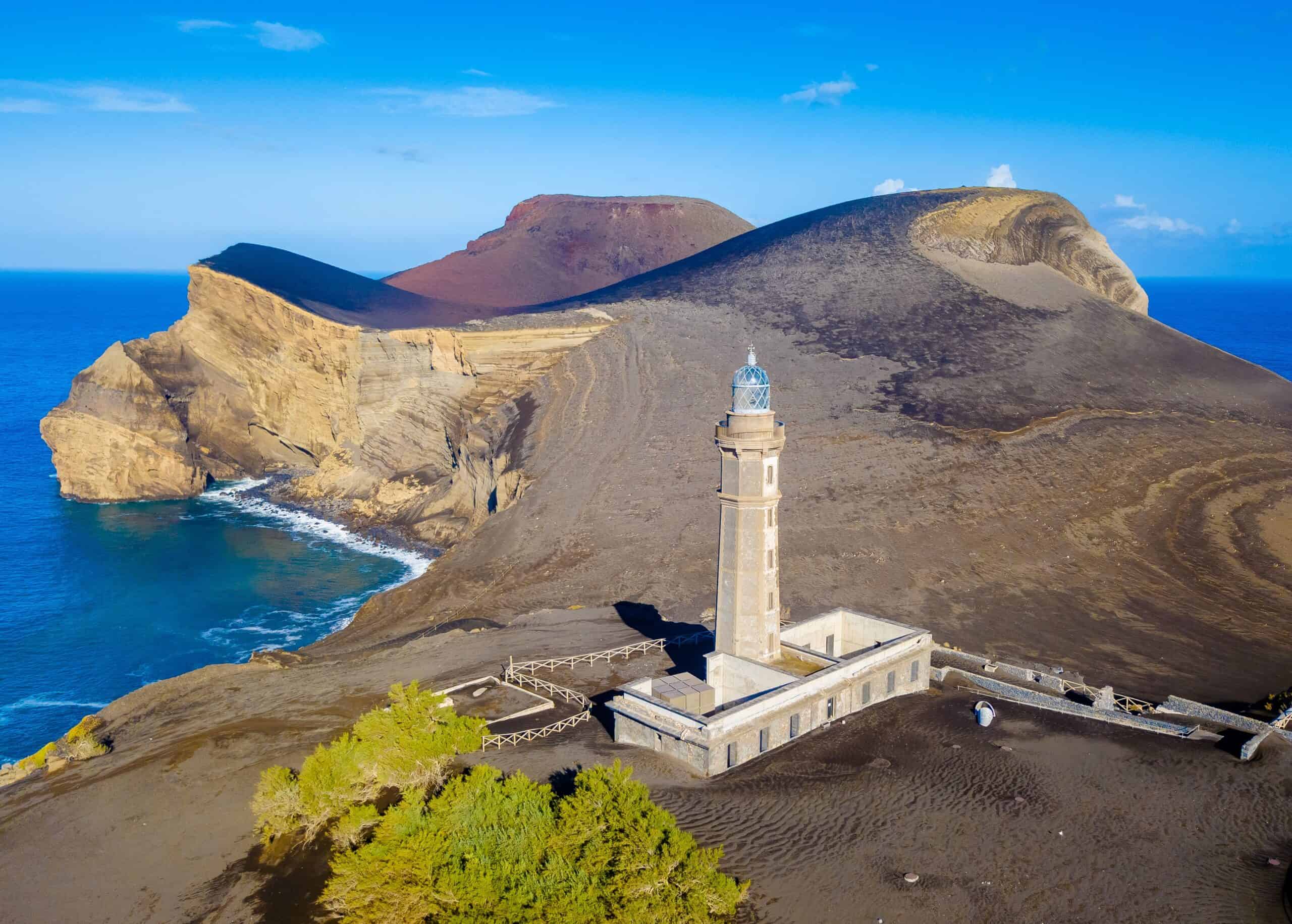 To learn more about the volcanic processes which not only formed the islands, but also their effects on the day-to-day life of Azoreans, the best interpretation centre is the Centro de Interpretaca do Vulcao dos Capelinhos on the island of Faial. Today’s barren, volcanic Capelinhos peninsula was created by a submarine eruption which began in September 1957 and ended in October 1958. Over 2km² of land were created over the thirteen-month period – however, more than 300 homes were also destroyed, and the eruption led to the emigration of 4000 residents (mainly to North America). As a young senator, John F. Kennedy jointly sponsored an Azorean Refugee Act through the US Congress, which initially granted 1500 visas for the Capelo families left homeless by the eruption.
To learn more about the volcanic processes which not only formed the islands, but also their effects on the day-to-day life of Azoreans, the best interpretation centre is the Centro de Interpretaca do Vulcao dos Capelinhos on the island of Faial. Today’s barren, volcanic Capelinhos peninsula was created by a submarine eruption which began in September 1957 and ended in October 1958. Over 2km² of land were created over the thirteen-month period – however, more than 300 homes were also destroyed, and the eruption led to the emigration of 4000 residents (mainly to North America). As a young senator, John F. Kennedy jointly sponsored an Azorean Refugee Act through the US Congress, which initially granted 1500 visas for the Capelo families left homeless by the eruption.
The Capelinhos Interpretation Centre exhibits images, newspaper reports and film taken at the time of the eruption. There’s also a particularly interesting 3D/holographic presentation which takes you through the various stages of the eruption, and you’ll see how Capelinhos is part of a larger fissure running east to the island’s central, 1km high caldera. Entrance costs 10€ per person.
Archipelago Choice Azores specialists
We specialise in tailor-made holidays to the nine islands of the Azores. Call our team on 01768 721020 to begin planning your own adventure.
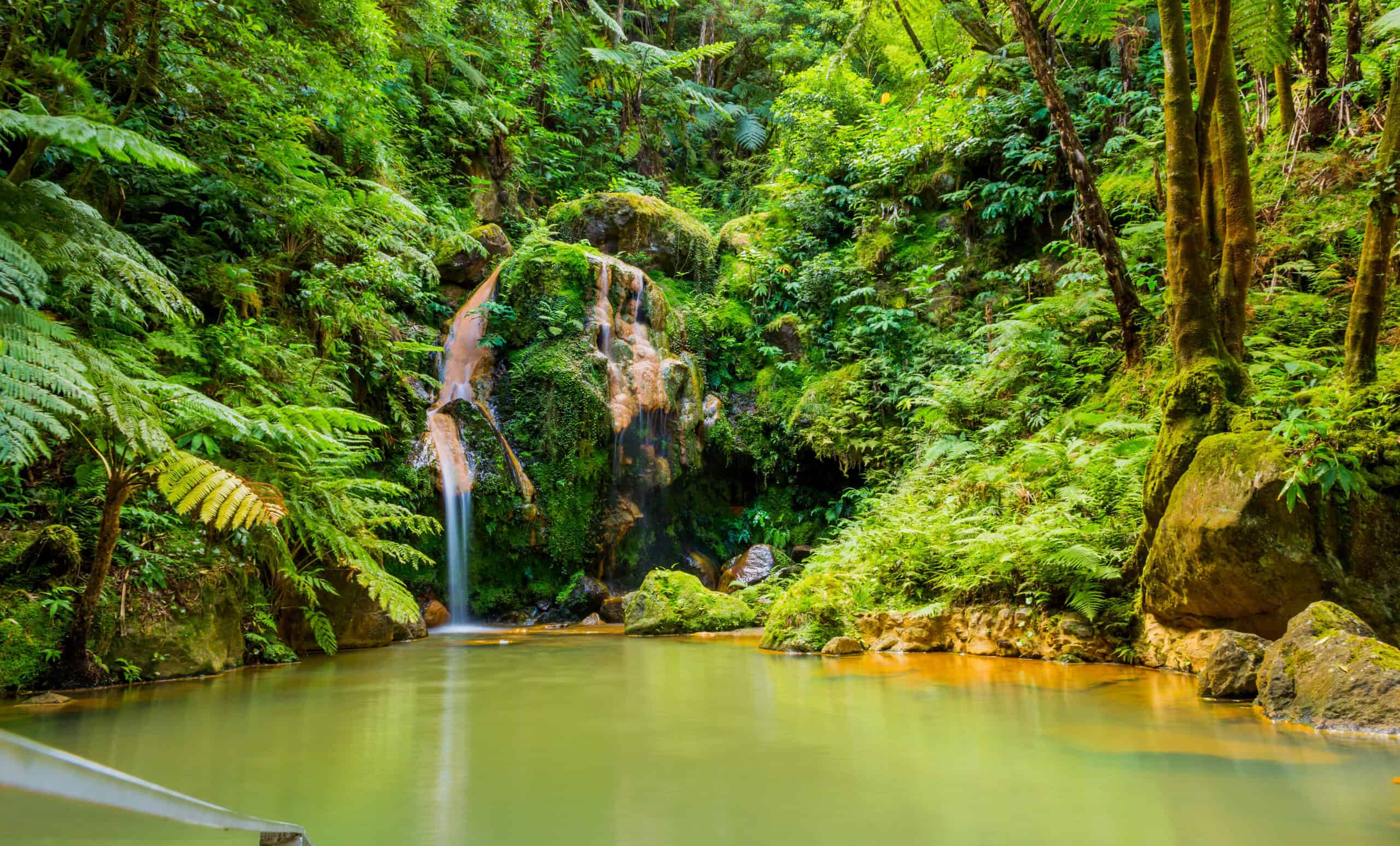









Follow us online